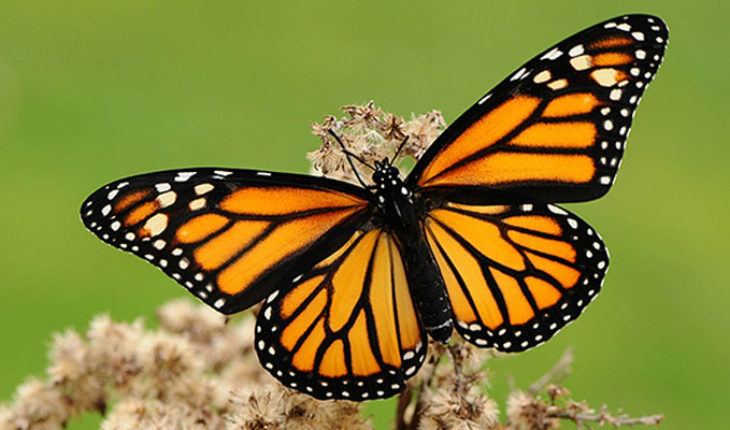Photos / Internet
The populations of monarch butterflies have plummeted in recent years. But a new study suggests that some efforts to save majestic insects, such as raising them in captivity, could make things worse.
Many monarch butterflies are bred in captivity and are then released in summer and autumn by enthusiasts in an attempt to increase their increasingly scarce numbers. Enthusiasts expect this to increase the number of monarchs who will migrate south to Mexico or Southern California, as they traditionally do every winter in North America.
But there seems to be an obstacle: according to a study by a group of researchers at the University of Chicago, monarch butterflies born in captivity show signs of difficulty migrating south.
The study, published Monday in the Proceedings of the National Academy of Sciences, says that something about captivity changes the migratory patterns of butterflies. “We hope this will be a way to understand how monarchs are losing migration,” said Marcus Kronforst, lead author of the study and associate professor of ecology and evolution at the University of Chicago, in a statement on the school’s website.
“These monarchs have been taken into captivity and prevented from migrating for many generations, and have genetically lost migration. It’s a microcosm of what happens naturally.”
For the study, lead author and Ph.D. Student Ayse Tenger-Trolander bought monarch butterflies from a commercial breeder and put them in an outdoor garden on the roof of a building. Although the monarchs were in mesh cages, they were still exposed to natural light, temperature and humidity. After these butterflies mated, Tenger-Trolander picked up the eggs and raised the children into adulthood.
Tenger-Trolander put these butterflies in an open metal cylinder that served as a “flight simulator” to see which direction they were trying to fly.
As a group, these monarchs, the offspring of butterflies bought from the commercial breeder, did not attempt to fly south.
In a second experiment, he took monarch butterflies captured in the wild and raised their descendants inside. In the flight simulator, this group also did not turn south.
“We know that there are many enthusiastic fans and breeders who are trying to do their best handling and avoid buying commercial breeders,” Tenger-Trolander said in the statement. “But there could also be a problem with the way they’re being raised indoors.”
Research showed that “migration behavior is remarkably sensitive to genetic and environmental change” and that monarch butterflies of commercial breeders and bred in captivity are genetically different from monarchs in the wild.
The captive monarchs had rounder front wings, similar to the previous wings of the monarchs who do not migrate.
“We can’t point to a single genetic change that did it because there are so many of them,” Kronforst said. “But we believe that somewhere buried in the genome there are changes that have broken it.”
The number of monarch butterflies is rapidly declining. 90% of the high-income population has fallen just 20 years ago, according to a 2018 study by the National Wildlife Federation. The population of Western monarch butterflies has fallen 86% since late 2017 in coastal areas of California, according to the nonprofit conservation group Xerces Society.
The U.S. Fish and Wildlife Service. He has considered putting monarch butterflies on the endangered species list.
Source: CNN
translated from Spanish: U.S. study
June 26, 2019 |





